Introduction to Zoo Animal Fencing
Zoo animal fencing plays a crucial role in the overall safety and security of zoological environments. It serves as the primary barrier between the animal inhabitants and visitors, ensuring that both parties remain safe while fostering an educational experience. The design and implementation of effective fencing solutions are fundamental to preventing escapes, which can pose significant risks to both animals and humans. Proper fencing not only limits the potential for animals to leave their designated areas but also acts as a deterrent to unauthorized access, safeguarding the animals from external threats.
Additionally, zoo animal fencing significantly contributes to the welfare of the animals themselves. Enclosures that are thoughtfully designed and adequately maintained can enhance the animals’ quality of life, providing them with a safe space that mimics their natural habitat as closely as possible. By creating secure enclosures, zookeepers can monitor animal behavior more effectively, ensuring that their psychological and physical needs are met. This level of care directly correlates with the overall health and well-being of the animals, which is a fundamental priority in reputable zoological institutions.
Moreover, contemporary zoo animal fencing is not solely focused on functional aspects; aesthetic considerations are increasingly being integrated into design practices. This approach enhances the visitor experience, allowing for engaging interactions with the environment. Fencing solutions that align with the theme of the exhibits while prioritizing animal safety can elevate the overall appeal of the zoo. Thus, as we delve deeper into the various fencing solutions available, it is essential to recognize their multifaceted importance in promoting safety, security, and aesthetic enjoyment in modern zoological settings.
Hebmetalmesh: A Leader in Stainless Steel Zoo Mesh Production
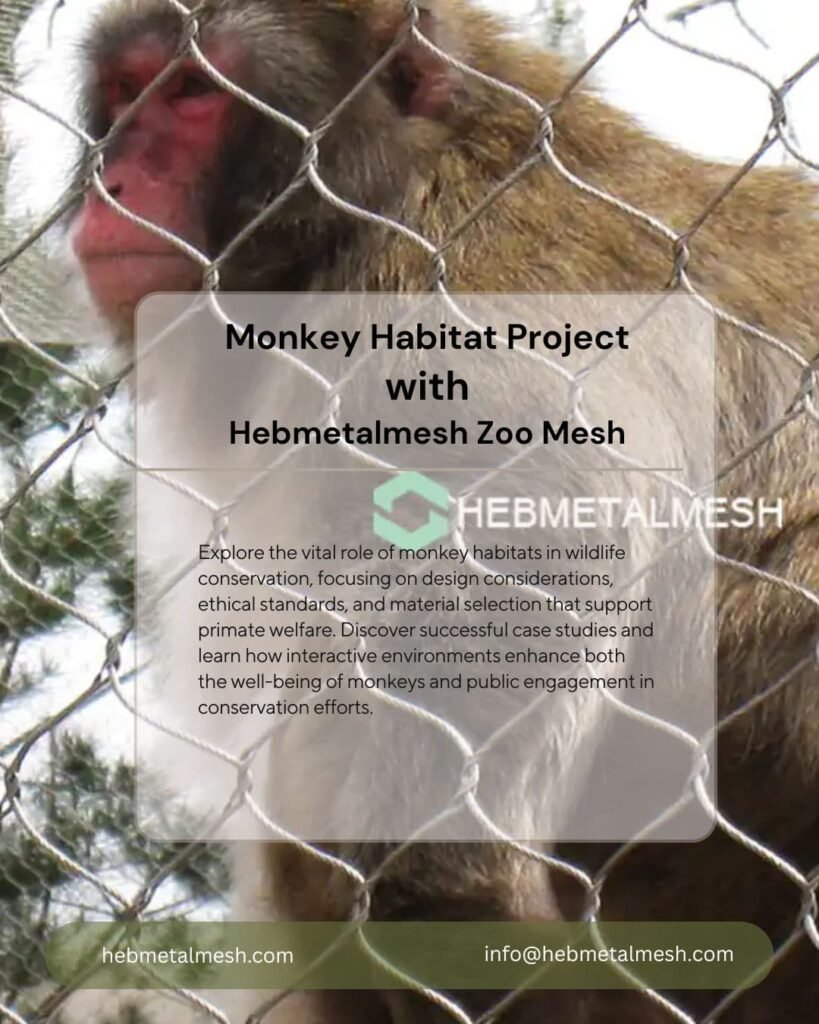
Hebmetalmesh has established itself as a prominent player in the market for stainless steel zoo animal fencing solutions. With years of experience as a professional factory, Hebmetalmesh specializes in producing high-quality stainless steel mesh that meets the rigorous demands of animal enclosures in zoos and wildlife parks. Their commitment to quality ensures that their products not only comply with safety standards but also enhance the aesthetic appeal of the environments they inhabit.
One of the standout offerings from Hebmetalmesh is their flexible handwoven stainless steel zoo animal fence panels and rolls. These products are crafted using advanced manufacturing techniques that guarantee strength and durability. The handwoven design provides additional versatility, allowing for various installation options that cater to the unique needs of different wildlife habitats. This flexibility is essential when constructing secure enclosures, ensuring that animals cannot escape while allowing for optimal visibility for zoo visitors.
The durability of Hebmetalmesh products is critical in maintaining safety and security in zoos. Stainless steel, known for its corrosion resistance and strength, makes it an ideal material for fencing. This ensures that even in harsh environmental conditions, the zoo animal fencing exhibits resilience over time. Furthermore, the aesthetic quality of Hebmetalmesh’s stainless steel mesh adds to the visual appeal of wildlife enclosures, contributing positively to the overall visitor experience.
Overall, Hebmetalmesh’s dedication to producing superior stainless steel zoo animal fencing solutions has made them a trusted choice among zoo operators looking for reliable and appealing fencing options. Their extensive range of products underscores their leading role in the industry, promising safety, security, and style for animal enclosures globally.
Choosing the Right Mesh Options: Nature Color vs. Black Oxide

When it comes to selecting the appropriate zoo animal fencing, the choice between nature color and black oxide mesh options plays a crucial role in balancing functionality, safety, and aesthetic appeal. Each option presents unique advantages that can enhance both the environment of the zoo and the welfare of the animals within it.
The nature color mesh, often designed to blend seamlessly with the surrounding landscape, is particularly advantageous for zoos that prioritize a naturalistic look. This type of fencing typically utilizes earth tones that are less intrusive and better integrated into outdoor settings, providing an unobtrusive barrier that allows visitors to enjoy a more immersive experience. The subtle hues of nature color fencing can create a calming environment for animals, minimizing stress by promoting an appearance that resembles their natural habitat.
On the other hand, the black oxide mesh option offers its own set of benefits. The sleek, dark appearance of black oxide fencing is known to add a contemporary appeal to zoo enclosures. Furthermore, this type of fencing can provide enhanced visibility for both the animals and zoo visitors. It has been noted that black oxide fences tend to be more durable and can be less susceptible to fading, maintaining their aesthetic quality over time. Additionally, the strength of this material is particularly advantageous for containing larger or more energetic species that might otherwise pose an escape risk.
In determining the best choice for zoo animal fencing, it is essential to consider not only the functional requirements of safety and security but also the visual impact of the chosen material. Ultimately, the decision may come down to the overall theme and mission of the zoo, as selecting the right mesh option can significantly influence the experience for both animals and visitors while ensuring that the fencing serves its intended purpose effectively.
Safety First: Secure Fencing for Large Predator Enclosures
The safety of both zoo animals and visitors is paramount when it comes to designing enclosures for large predators such as lions and tigers. Selecting the most secure type of fencing is critical to prevent escapes and ensure that these majestic creatures are safely contained. Various fencing materials and designs have emerged as effective solutions for these specific challenges.
One of the most reliable materials for predator fencing is reinforced steel mesh. Its strength provides an impenetrable barrier, deterring both escape attempts by the animals and unauthorized access by humans. In addition to steel mesh, electric fencing can be employed as an additional layer of security. Using a low-voltage current provides an effective deterrent without harming the animals, ensuring a safe boundary. The combination of these two fencing types creates a formidable barrier that helps maintain safety.
Height is another critical factor in large predator enclosures. Fencing must typically be at least 12 feet tall to prevent large cats from jumping over. Beyond mere height, the design of the fencing matters as well; sloped tops or inward-angled structures can further reduce the chances of escape, as they hinder climbing attempts. Moreover, underground barriers, such as concrete substrates or embedded fences, are recommended to prevent tunneling, a behavior seen in some species.
Aesthetic considerations should not be overlooked either. While security is the primary goal, the enclosure design should blend seamlessly into the surrounding environment, providing a conducive habitat for the animals. By utilizing natural elements alongside secure zoo animal fencing, zoos can create spaces that are not only safe but also engaging for both the animals and the visitors.
Custom Mesh Panels for Primate Habitats
Designing safe and secure enclosures for primates necessitates the implementation of specialized fencing solutions. Custom mesh panels are particularly crucial in these scenarios due to the unique behaviors and characteristics of primates, which include climbing and manipulating their environments. Unlike traditional fencing, the use of custom mesh offers a more adaptable approach, catering to the specific needs of each habitat while ensuring the safety of both the animals and the visitors.
Primate habitats require fencing that is not only climb-proof but also robust enough to withstand the physical strength of these animals. Standard fencing materials often fall short in addressing these requirements, leading to potential security risks. Therefore, the integration of custom mesh panels provides a tailored solution that can effectively prevent escape and protect the integrity of the enclosure. Hebmetalmesh specializes in high-quality fencing solutions made from durable materials designed specifically for these types of environments.
Moreover, primates exhibit complex behaviors, which necessitate fencing that accommodates their social structures and activities without compromising safety. Hebmetalmesh provides expert design consultation to create panels that discourage climbing while allowing for visibility and interaction. Their custom mesh panels can be designed with various openings, ensuring that the animals can engage with their surroundings while remaining secure. The flexibility in design allows for better aeration and natural lighting, contributing to a more enriched habitat.
Investing in custom mesh panels for primate habitats not only enhances security but also facilitates the establishment of an aesthetically pleasing environment that visitors can appreciate. Effective zoo animal fencing solutions, such as those offered by Hebmetalmesh, align safety with visual appeal, thereby ensuring that both animals and visitors enjoy a safer, more engaging experience.
Zoo Aviary Renovation: Where to Buy Stainless Steel Animal Fencing
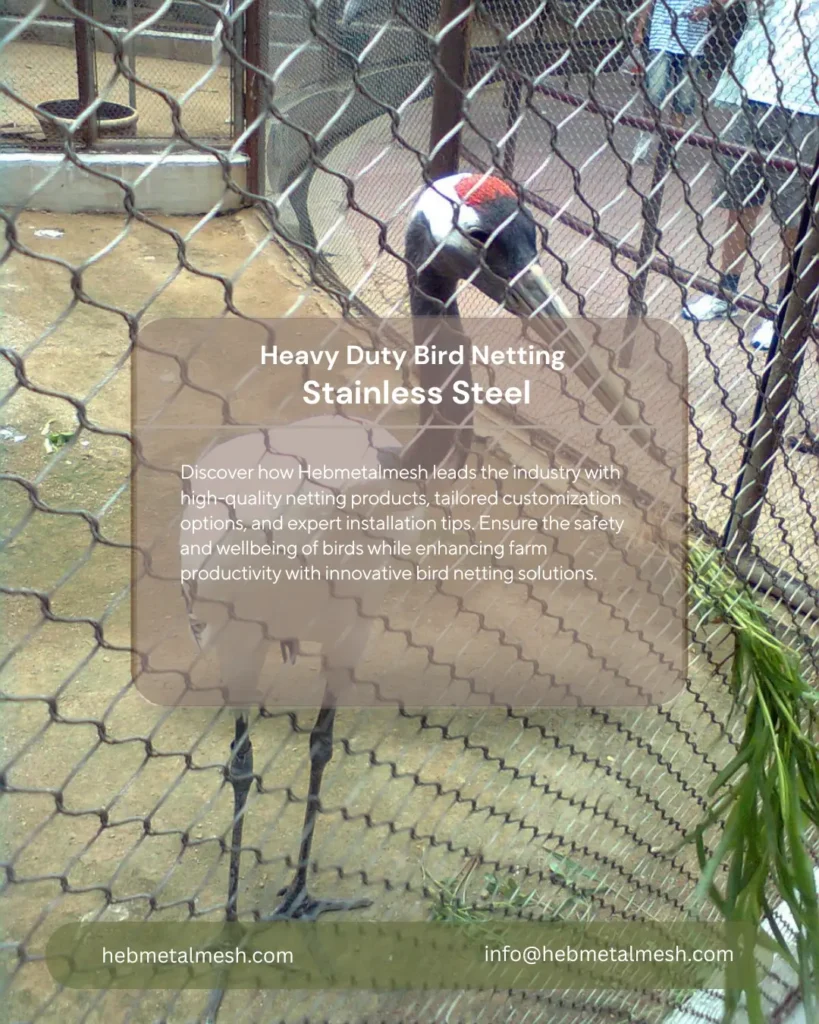
When considering renovation projects for zoo aviaries, selecting the right materials for animal fencing is crucial. Stainless steel animal fencing is often the preferred option due to its durability, resistance to corrosion, and long-lasting nature. For zoo facilities eager to enhance both the safety and aesthetic appeal of their aviaries, sourcing high-quality fencing solutions is paramount.
Hebmetalmesh emerges as a reliable supplier for stainless steel animal fencing specifically designed for zoo environments. They offer a comprehensive range of fencing products that cater to the unique needs of aviary renovations. With a focus on customer satisfaction, Hebmetalmesh not only provides superior quality materials but also emphasizes safety and security in their designs. Their stainless steel fencing solutions help ensure the protection of both the animals and the people visiting the zoo.
In addition to the quality of the materials, choosing a vendor like Hebmetalmesh means gaining access to expert advice and support. Their experienced team can guide zoo operators through the selection process, helping them identify the appropriate specifications and configurations required for their specific renovation projects. Furthermore, they understand the regulatory standards that must be met in animal enclosures, ensuring compliance with safety protocols.
Zoo facilities should also look for additional features when purchasing stainless steel animal fencing. Options such as custom sizes, various mesh patterns, and finishing treatments can enhance the product’s functionality and visual appeal. By collaborating with a dedicated supplier like Hebmetalmesh, zoos can effectively execute their aviary renovation plans while prioritizing safety, durability, and aesthetic integration.
Cost Analysis: Black Zoo Fencing That Blends into Nature
When considering fencing solutions for zoos, the cost associated with black zoo fencing is a significant factor. This type of fencing is not only known for its robust design but also for its ability to harmoniously blend into the natural surroundings. The aesthetic appeal of black fencing can enhance the visual landscape of animal habitats while also ensuring the safety and security of both the animals and visitors.
Typically, the cost of black zoo fencing varies depending on the materials used, the height required, and the overall perimeter length. Common materials include wrought iron, steel, and high-grade composite options, all of which provide durability and strength necessary to contain large animals effectively. On average, the expenditure can range from $20 to $50 per linear foot, influenced by the fencing’s design intricacies and installation requirements. When budgeting for fencing projects, it’s essential to consider not only the initial investment but also the long-term maintenance costs associated with different fencing materials.
To achieve the best value for durable fencing solutions, it is advisable to obtain multiple quotes from reputable suppliers and contractors. This step enables zoo operators to compare not only the cost but also the quality and warranty offered for the fencing. Investing in high-quality black fencing may have a higher upfront cost, yet it can result in savings over time due to its longevity and reduced maintenance needs.
Moreover, incorporating natural elements into the design, such as vegetation or landscaping, can further enhance the integration of the black zoo fencing into the environment. This approach not only assists in camouflaging the fencing but also contributes to the overall aesthetic value of the zoo. Ultimately, a well-planned budget that takes into account the durability, cost, and aesthetics of black zoo fencing can lead to a successful fencing project that meets safety requirements while providing a visually appealing environment.
Comparing Safety Standards and Materials for Zoo Enclosure Barriers
When it comes to zoo animal fencing, safety is undoubtedly a top priority. The materials and standards employed in the construction of enclosure barriers significantly affect not only the well-being of the animals but also the safety of visitors. Various types of materials are utilized in modern zoo enclosures, including steel, glass, wood, and concrete, each bringing its own set of advantages and challenges.
Steel fencing is one of the most common choices, known for its durability and strength. It is made from high-tensile steel, which provides a robust barrier against escape while being resistant to degradation. Furthermore, steel can be configured into various designs, allowing for both functionality and aesthetic appeal. However, while steel fences are effective in ensuring the protection of both animals and humans, there is a potential risk of injury due to sharp edges if not properly maintained.
Glass is increasingly being used in zoo animal fencing, particularly in enclosures intended for large predators or more interactive habitats. This material offers excellent visibility, allowing visitors to observe the animals without any obstruction. However, the cost of glass is significantly higher than other materials, and additional structural support is often needed to withstand impacts and prevent breakage.
Wooden fencing appeals to many zoos for its natural aesthetics, blending seamlessly with the environment. However, wooden structures require ongoing maintenance and may pose challenges regarding containment, particularly for more agile species. Conversely, concrete offers strength and longevity but may create a stark and uninviting atmosphere that or diminishes visitor experience.
Ultimately, the choice of materials for zoo enclosures must align with safety regulations and guidelines, ensuring that the design meets both the necessary requirements and the disposition of the animals housed within. These safety standards are pivotal in assessing the potential risks associated with different fencing options, guiding zoos in their decisions to create safe, secure, and engaging environments for both animals and visitors.
Conclusion: The Future of Zoo Animal Fencing
In a world where wildlife conservation and animal welfare are becoming increasingly important, the role of zoo animal fencing cannot be understated. This comprehensive guide has explored various aspects of zoo animal fencing, emphasizing its significance in ensuring the safety and security of both animals and visitors. The choice of fencing materials and designs is paramount, as they must not only deter escaping animals but also provide a visually appealing environment that aligns with the ethos of modern zoos.
High-quality zoo fencing solutions are essential for creating habitats that mimic natural environments. Such designs contribute to the overall well-being of the animals, ultimately leading to better behavioral health. Zoos are encouraged to adopt innovative fencing solutions that enhance the aesthetic appeal of enclosures while also ensuring the necessary safety standards are met. The implementation of transparent materials, for example, allows for a clear view into animal habitats while maintaining secure boundaries.
Moreover, investing in advanced technologies such as electronic monitoring systems can complement traditional fencing methods, providing an added layer of security. This integration of technology not only helps in monitoring animal behavior but also acts as a deterrent against potential breaches. As the future unfolds, environmental sustainability must also be taken into account, with eco-friendly materials serving dual purposes of security and minimal ecological impact.
As zoos continue to evolve in their missions to educate the public about wildlife conservation, the importance of selecting appropriate zoo animal fencing remains critical. Prioritizing safety, aesthetics, and the welfare of animals will ensure that these institutions can thrive as guardians of biodiversity. Thus, the future of zoo animal fencing holds promising developments for enhancing the visitor experience and enriching the lives of the animals in their care.
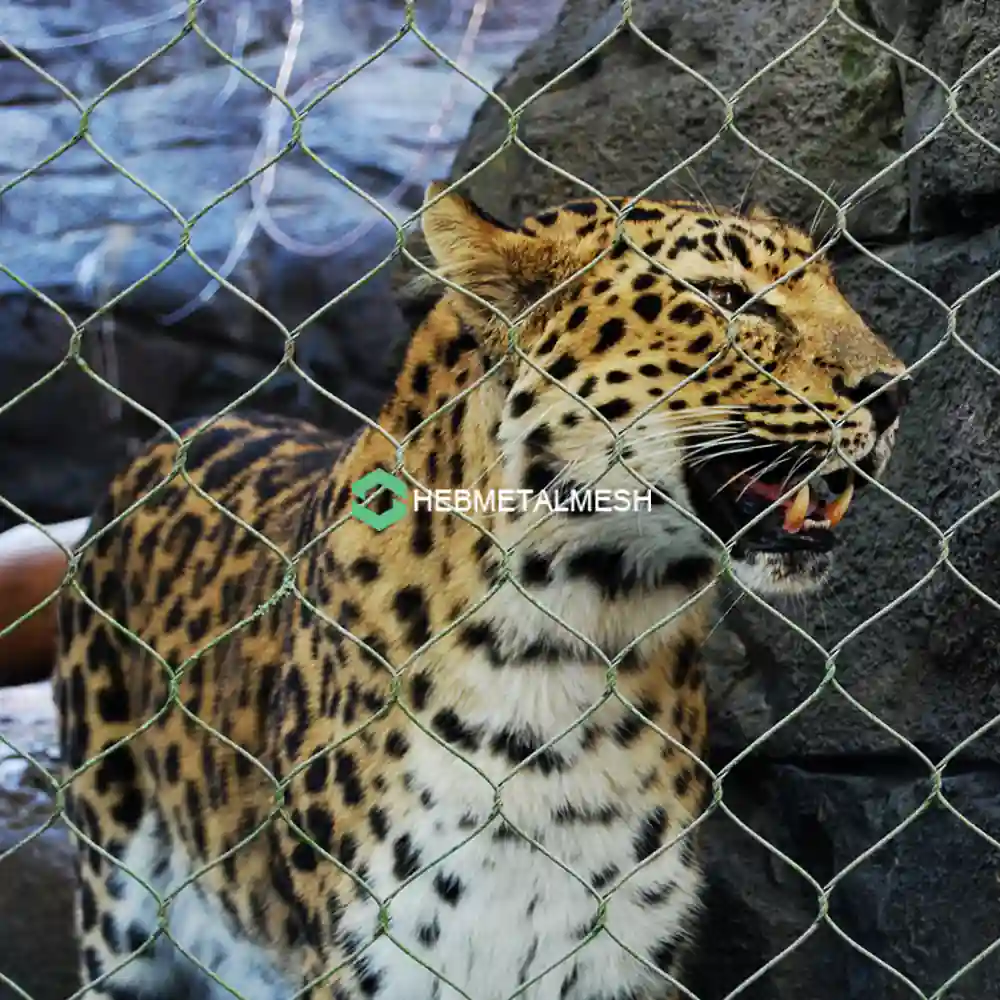
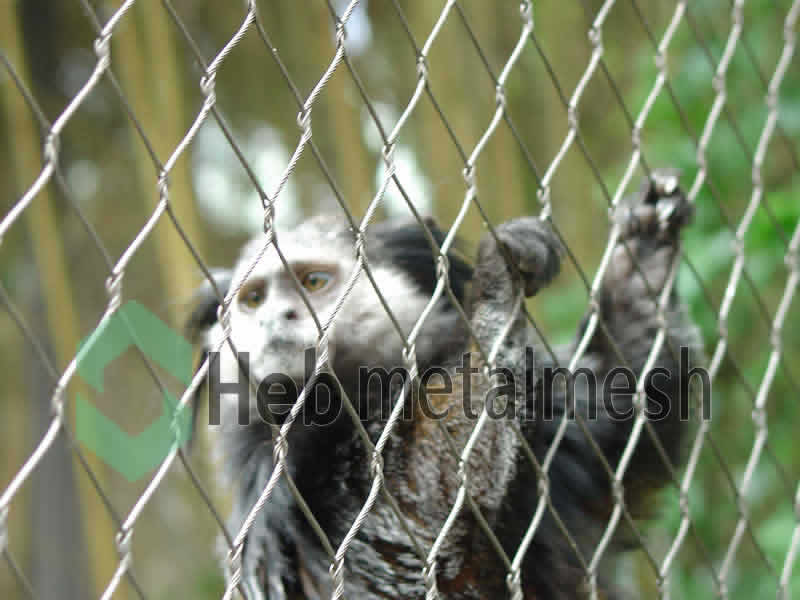
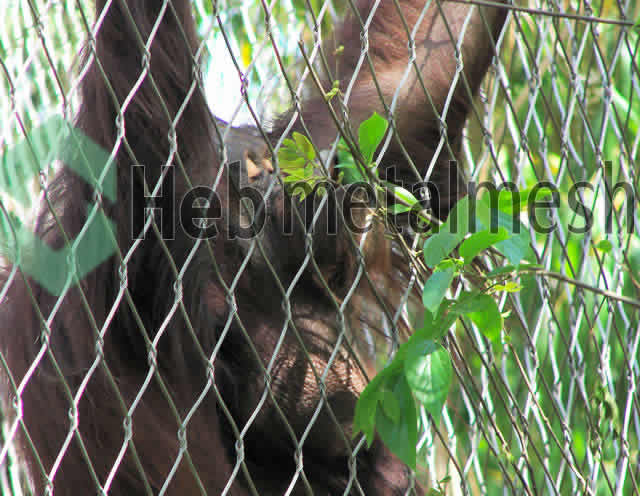
Zoo mesh for leopard cages in zoological garden